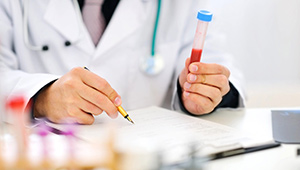 Estradiol is one of the most active steroid hormones from the estrogen group, which is produced by the follicular apparatus of the female reproductive glands. A small amount of the hormone is secreted by the adrenal cortex, as well as by the testicles. By the level of estradiol in the female body, one can judge the success of in vitro fertilization, as well as the peculiarities of the course of pregnancy after implantation of a blastocyst into the uterine wall.
Estradiol is one of the most active steroid hormones from the estrogen group, which is produced by the follicular apparatus of the female reproductive glands. A small amount of the hormone is secreted by the adrenal cortex, as well as by the testicles. By the level of estradiol in the female body, one can judge the success of in vitro fertilization, as well as the peculiarities of the course of pregnancy after implantation of a blastocyst into the uterine wall.
The hormone estradiol - what is it?
Estradiol is produced by the granulosa cells of the follicles that mature in the ovaries, as well as by the adrenal cortex and adipose tissue. The correct functioning of the reproductive organs and the likelihood of conception during IVF depends on its content in a woman's body.
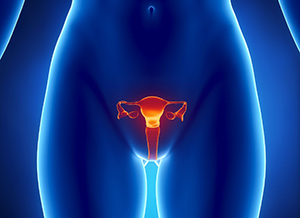 The steroid hormone affects the functioning of the organs that contain receptors that are sensitive to it. Target organs of hormones from the estrogen group include:
The steroid hormone affects the functioning of the organs that contain receptors that are sensitive to it. Target organs of hormones from the estrogen group include:
- uterus;
- vulva;
- breast glands;
- vagina;
- Fallopian tubes (oviduct)
The hormone content is determined by the gestation period or the phase of the menstrual cycle. During the intrauterine development of the fetus, its concentration increases, while the maximum content of estradiol is reached in the prenatal period.
The steroid hormone takes part in ensuring normal delivery by regulating the rate of blood coagulation, as well as the tone of blood vessels in the tissues of the birth canal.
In women planning a pregnancy, the concentration of estrogen is regulated by luteinizing and follicle-stimulating hormones. Between days 1 and 14 of the menstrual cycle, the serum estradiol level rises and reaches its limit at the time of ovulation.
Function of estradiol in the female body
The hormone estradiol in women - what is it? In the gonads in women, three types of steroid hormones are produced: androgens, progesterone, and estrogens. The following substances are among estrogens:
- estrone (E1);
- estradiol (E2);
- estriol (E3).
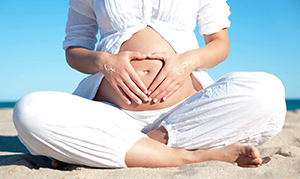 The generative function of the ovaries is controlled by the interaction of the endocrine organs with the corresponding parts of the brain. Under the influence of estrogens in the female body on the 14th day of the menstrual cycle, ovulation occurs - the release of the oocyte (egg) from the follicle into the fallopian tube.
The generative function of the ovaries is controlled by the interaction of the endocrine organs with the corresponding parts of the brain. Under the influence of estrogens in the female body on the 14th day of the menstrual cycle, ovulation occurs - the release of the oocyte (egg) from the follicle into the fallopian tube.
The dominant follicle turns into a corpus luteum and begins to synthesize progesterone and estradiol. An increase in their concentration in the body entails a loosening of the endometrium, due to which the chances of successful implantation of the embryo into the uterine wall are increased.
Effect of estradiol on pregnancy
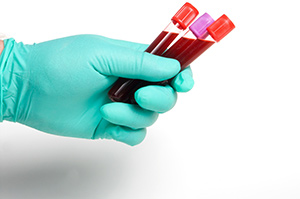 Gestation is the period during which estradiol has a significant effect on the functioning of a woman's reproductive organs and fetal development. From the moment of conception to the birth of a child, its concentration continuously increases from 215 units in the 1st trimester to 27 thousand units at the time of childbirth.
Gestation is the period during which estradiol has a significant effect on the functioning of a woman's reproductive organs and fetal development. From the moment of conception to the birth of a child, its concentration continuously increases from 215 units in the 1st trimester to 27 thousand units at the time of childbirth.
Up to three months of pregnancy, estradiol is synthesized by the ovaries, after which the mature placenta in large doses begins to produce this hormone. Due to its presence in the body, the uterus prepares for the birth process, with a normal level of this substance, pregnancy proceeds without complications. If the E2 level decreases during gestation, this may signal a dysfunction of the placenta and an increased risk of spontaneous abortion.
Functions of estradiol in the male body
The hormone estradiol in men - what is it? In a small concentration, the female sex hormone is found in the male body. Its level in blood plasma does not exceed 3-55 pg / ml. Estrogens are formed from anabolic hormones under the influence of the aromatase enzyme. It is also produced by cells of adipose tissue, in connection with which, in obesity, the feminization of men occurs, the manifestations of which are: gynecomastia;
- decreased libido;
- female pattern hairiness;
- changing the timbre of the voice;
- violation of erectile function;
- thickening of the fat layer at the thighs.
Normal estradiol levels are important in maintaining sexual function and fertility. It prevents baldness and is an important factor in maintaining bone density and lipid metabolism. Lack or excess of this substance can lead to the development of pathological processes in the body of a man.
What is the role of estradiol in IVF?
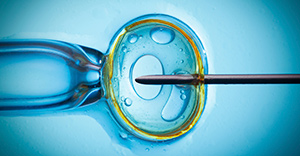 The IVF procedure involves the stimulation of hyperovulation, thanks to which it is possible to obtain not one, but several dominant follicles in one menstrual cycle. Oocytes extracted from a woman's body are fertilized with sperm in a test tube, after which the resulting embryos are cultured in a nutrient medium for 3 or 5 days.
The IVF procedure involves the stimulation of hyperovulation, thanks to which it is possible to obtain not one, but several dominant follicles in one menstrual cycle. Oocytes extracted from a woman's body are fertilized with sperm in a test tube, after which the resulting embryos are cultured in a nutrient medium for 3 or 5 days.
Before IVF, specialists determine the period during which the level of estradiol in the body reaches a maximum. In reproductive medicine, it is called the implantation window, since the probability of conception during this period is maximum.
The rate of estradiol in IVF is one of the reliable signs of hyperstimulation of the female reproductive glands. An analysis for the content of the hormone is carried out before the blastocyst is inserted into the uterine cavity. Thus, it is possible to track the dynamics of an increase or decrease in its concentration in the blood plasma of the expectant mother.
Estradiol rate after IVF:
|
Gestation period in weeks |
Average estradiol value in pg / ml |
|---|---|
|
2 |
305 |
|
4 |
530 |
|
6 |
1270 |
|
eight |
1566 |
|
ten |
1970 |
|
12 |
2700 |
|
fourteen |
3530 |
|
16 |
5800 |
|
eighteen |
6150 |
|
twenty |
8530 |
|
22 |
9860 |
|
24 |
12110 |
|
26 |
12490 |
|
28 |
13060 |
|
thirty |
13670 |
|
32 |
14065 |
|
34 |
16240 |
|
36 |
18240 |
|
38 |
18965 |
|
40 |
20250 |
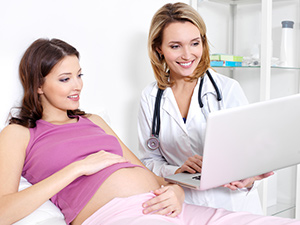 The rate of estradiol in IVF signals the success of in vitro fertilization. If the hormone remains at the same level as before pregnancy and gradually begins to grow, it means that the embryo implantation was successful.
The rate of estradiol in IVF signals the success of in vitro fertilization. If the hormone remains at the same level as before pregnancy and gradually begins to grow, it means that the embryo implantation was successful.
The estrogen content after IVF is constantly monitored, thanks to which it is possible to monitor the characteristics of the intrauterine development of the fetus. Estradiol contributes to the formation of the baby's skeleton and ensures the normal functioning of the placenta. Its concentration increases after embryo transfer, thereby creating conditions for a favorable pregnancy and labor.
